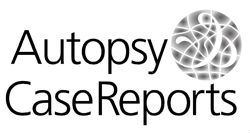What does the future hold
Fernando Peixoto Ferraz de Campos
Since ancient times the knowledge of the human body and physiologic theories were obtained secretly, against the laws of the Catholic Church, through exhumation followed by anatomic dissection of newly buried persons. From those times, the importance of post-mortem study for the advance of medical knowledge was noted. In this context, the nineteenth century saw the heyday of the autopsy. Since then, autopsy has been responsible for the progression of clinical medicine, medical education, epidemiology, and public health. From the 1950s up until 1990, 87 diseases were identified by autopsy. The discovery of severe acute respiratory syndrome (SARS) epidemic in 2003 and the avian flu epidemic in 2006 were through autopsy as well.
Publication date:
01/13/2016

